Indoor primrose: features, types and care at home
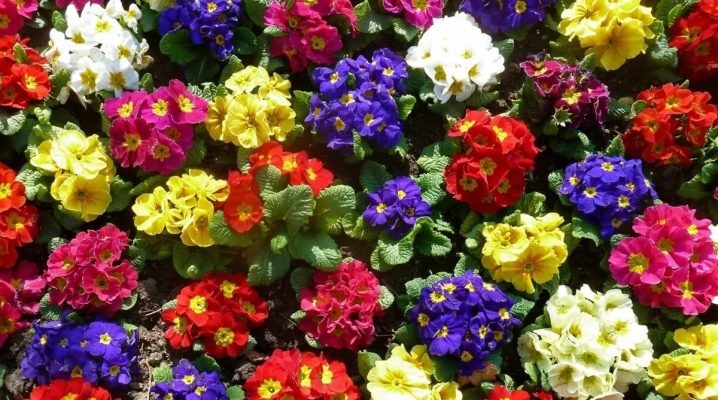
One of the smallest plants is primrose, popularly known as primrose. Its minimum height is only 5 centimeters. Blue, purple, yellow, red - almost the entire palette of the brightest shades is found in these plants, which growers fell in love with for their delicate, delicate and graceful aroma. Residents of the Carpathians, Transcaucasia, Central Asia, the Middle East and the European part of Russia are lucky, since it is in these countries that this flower can most often be observed in its natural environment.

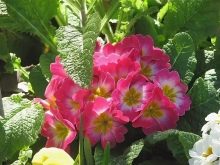

Description
In addition to the official name, primrose in some areas has its own.
- "The Golden Key of Spring" - from the Poles.
- "Paralysis-herb" - so called primrose in Ancient Russia, since it was used in the treatment of paralysis.
- "Flower of the 12 Gods" - among the peoples of Greece, where each color was identified with a certain feeling. For example, yellow with separation, red with love, white with innocence, and pink with tenderness.
- A special attitude was experienced towards primrose during the time of Catherine the Great. The Empress herself was so inflamed with love for her that she raised her to the rank of "royal flower", and in most of the greenhouses of the Winter Palace she ordered to cultivate only these plants. Artisans of this time period depicted primroses on tea sets and on the coats of arms of great royal families.
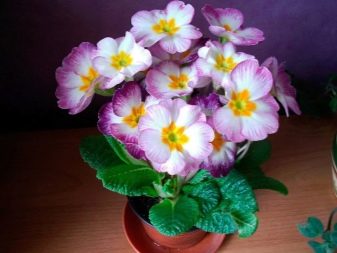
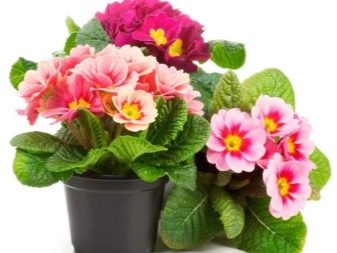
Indoor primrose can be insidious and instead of exquisite beauty "bestow" you with allergic diseases. Contact with the juice of this plant threatens with irritations and rashes of a various nature, coughing and sore throat. With these properties, nature has "rewarded" the popular type of primrose inverse conical.
To avoid such consequences in families with children and elderly people, you need to place flowers in inaccessible places, and while caring for them, do not neglect protective equipment in the form of gloves and a mask.
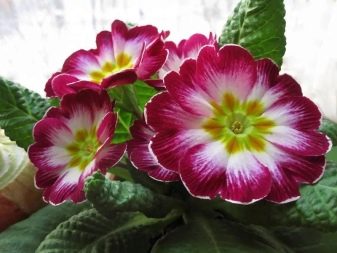
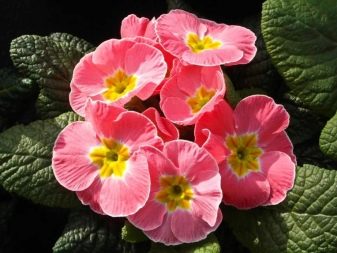
Varieties
A distinctive external feature of a primrose is diminutiveness. The height of the bush does not exceed 20-30 centimeters. It resembles a spherical shock, crowned with bright flowers. Walking through the flower market, visitors first of all pay attention to primroses. There are more than 50 species of them, and among them there are both perennial and annual. Differences between primrose and other early flowering plants:
- fibrous root, rosette of leaves at the very root with plates 6-8 centimeters in diameter;
- in shape, the leaves are elongated, heart-shaped, in the form of an egg with a sharp end downward;
- the leaves are fleecy to the touch, wrinkled in appearance;
- the location of the floral part is exactly in the center in the form of an umbrella, a brush, and very rarely - in a single form;
- primroses bloom from three months or longer.
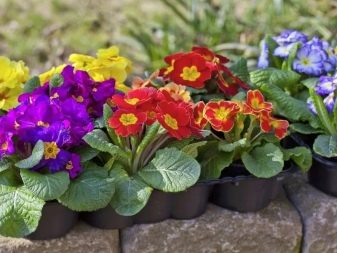
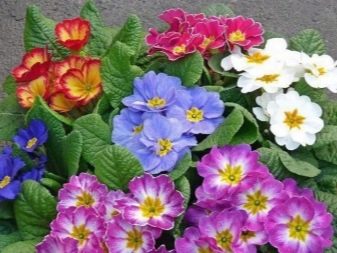
Home breeders advise 3 types with the lightest agricultural technology.
- Chinese primrose - despite the multi-colored range, it has a unifying feature - a yellow "eye" is located on all colors. The leaf blade has a scalloped edge of bright green color. Its growing period is short and ranges from one and a half to two years. Then the bush completely degenerates, while losing its decorative effect. When grown indoors, primrose can tolerate multiple transplants. Differs in fast survival rate, grows green mass at high speed.
This species is taller than others, its growth reaches 35 centimeters and with larger pink, double and clove-shaped flowers. In rare cases, it can provoke an allergic reaction when the juice gets on the skin, which manifests itself in the form of a red rash.

- Primula is reverse conical. It got its name because of the conical shape of the bush, turned upside down with a cone. Perennial herb no more than 20 centimeters high. It pleases with its flowering up to twice a year, most often in autumn and spring. Peduncles are low, white-green in color, at their ends there are from 8 to 10 flowers, united in umbellate inflorescences. The species is able to delight with lush flowering all winter and longer, capturing the spring months. The petals are large, resembling a corolla in shape. The color of the buds is from white to deep purple. Among the brightest representatives of the inverse conic primrose, the most interesting varieties in terms of color range are distinguished:
- "The Snow Queen" - resembles islands of unmelted snow in a green spring meadow;
- "White pearls" - primrose with iridescent pearl flowers;
- "Purple Mix" - double flowers from light lilac to deep pink shades;
- Imported variety "Twilly Touch Mi" with unusual inflorescences of a double color: with an orange, purple, red center, smoothly turning into a white edging.
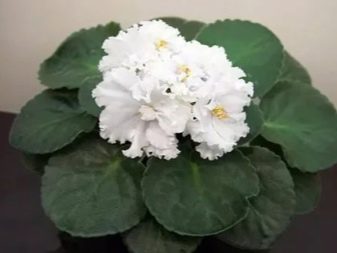
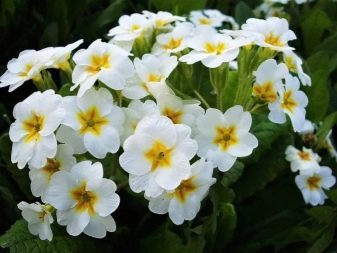
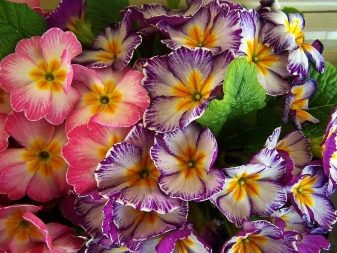

- Primula stemless, otherwise ordinary. It is found in garden plots and grown in apartments. In nature, it most often grows in Africa, Asia and Europe. It is a herbaceous perennial plant. The maximum height does not exceed 20 centimeters. Elliptical elongated leaves of bright green color grow from long petioles. The flowering period begins in April and ends in June. Single flowers are crowned with thin peduncles. The brightest representatives of stemless primrose.
- "Sphinx Apricot" - has an original color changing from red to orange.
- Hybrid "Sphinx neon Rose" - differs in flowers of pink-crimson shades.
- "Aurikula Argus" - is more often used as an indoor flower and for distillation. This procedure allows you to get a bright bloom in the last decade of February. Also, this variety can be purchased on supermarket shelves as a gift to the weaker sex for International Women's Day.
After flowering, it can be safely planted in the garden area, and in the winter it can be brought into the basement, and this procedure can be carried out annually.
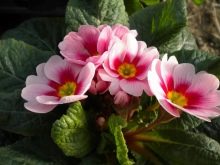


How to care?
Growing a primrose indoors and observing proper care is easy for those who have already seen how this plant grows in the open field, since it needs approximately the same conditions.
Since this flower naturally grows in warm climates, then he loves the sun. True, you need to take into account one nuance: if you place the primrose in direct sunlight, they will have a destructive effect - burns will appear on the leaves, and the flower buds will dry out before they open up. Also, inexperienced growers make another mistake - they hide the flower in the shade, and thus even more harm is done to it.
Therefore, you need to decide on the place of "residence" of the flower from the first day. You need to install the pot on a windowsill facing the west or east side.
The light should be diffused. This can be facilitated by trees growing outside the window. In the northern regions, due to the short daylight hours, the primrose must be supplemented, which can be done using a phytolamp.
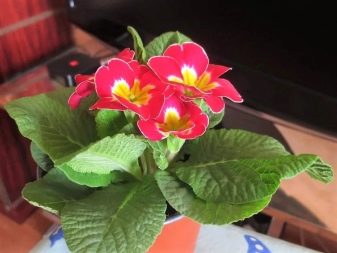
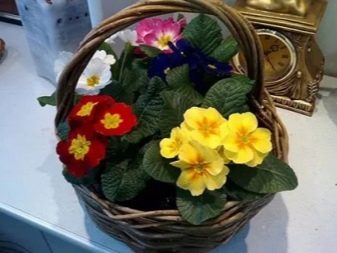
At home, an ambient temperature of 15-22 degrees Celsius is considered pleasant for a primrose. Depending on the season, it changes up or down. From the beginning of spring to October, the thermal regime fluctuates between 18-21 degrees.In the cold season, the thermometer should not rise above 17 and drop below 15 degrees Celsius.
During the flowering period, each variety of primroses has its own optimum temperature. Reverse conical easily tolerates 16-18 degrees, the rest require low rates, reaching up to 12 degrees. With a correctly-exposed mode of light and heat, even for beginners, primrose will bloom luxuriantly and for a long time..
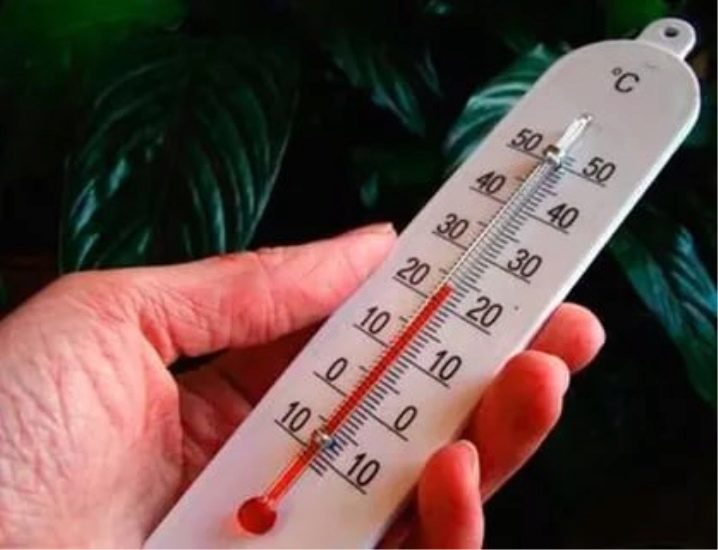
Conditions of detention
Watering indoor primroses is necessary in the same way as in a summer cottage. The soil must be kept moist and loose. Especially this factor must be taken into account during the period of flower production. Find a compromise with the plant and adjust the watering so that the soil does not dry out too much and does not become waterlogged. Also observe the requirements for watering primroses.
- Watering is carried out only with settled water.
- When doing this, exclude tap water. The presence of bleach can destroy even the most unpretentious flower. If there is no settled liquid, just use boiled one.
- Flowers love melt and rain water, which must be warmed up to room temperature before watering.
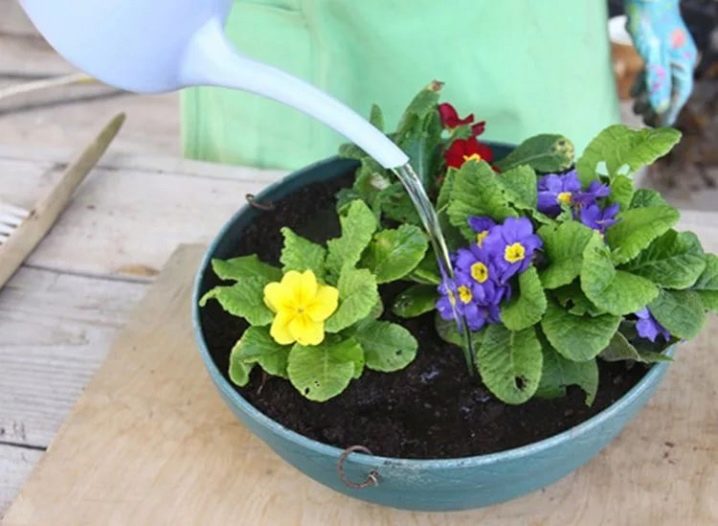
In its natural environment, primrose grows in countries where the humidity level is moderate. Wild primrose blooms during the period of active snow melting and its root system absorbs useful moisture at a high rate.
At home, it's a completely different matter. At the time of flowering primrose, batteries are still heating in the apartment, the atmosphere for flowers is too hot. It will not be easy for an amateur florist to maintain an optimal humidity regime. To do this, there are ways to artificially raise the humidity in the room.
- You can place a small container of water near the flower pot or put a damp, dense cloth over the heater.
- A low pallet is taken, the bottom is filled with expanded clay, moss or sand. We install pots with plants on top, and periodically add water to the pan. Humidity is maintained at the proper level due to constant evaporation of the liquid.
- The easiest way to maintain the required humidity in the room is a special humidifier for plants. According to the instructions, you can set a moisture regime that is comfortable for your plants.

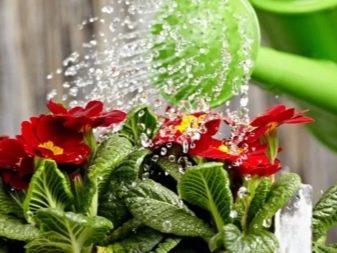
Transfer
Every year, a primrose transplant is not required, it is enough to carry out this procedure every 3-4 years. Purchased flowers are an exception, since the conditions for caring for such plants differ from caring for an apartment or in a private house.
If the plant is changed immediately after purchase, it will be stressful for it. Some growers, especially beginners, mistakenly rush to plant in a new pot because of the ugly appearance of the plant or the container in which it was sold. But first you need to think carefully about whether the plant needs it. The only time you really need an emergency transplant is when you spot a pest or disease on your primrose.
You need to pick up a pot with holes in the bottom, corresponding to the size of the root of the flower. Capacities are purchased depending on your desires and wallet size. Better to buy clay, the plant will breathe in it.
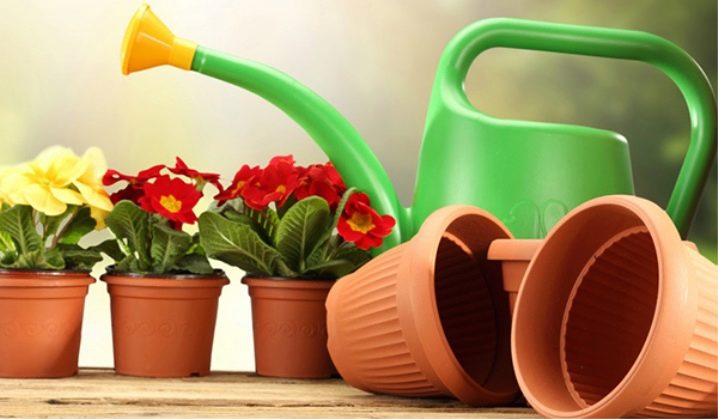
The soil should consist of leafy and soddy soil, to which sand, a little perlite or vermiculite are added. With these "ingredients" the soil will retain moisture for a long time and remain loose at the same time. The bottom can be covered with moss or other drainage mixture. The root system of primrose is very delicate, so you need to transfer the plant as carefully as possible. If the roots have formed a tangled ball with the ground, then you do not need to separate it with your hands, just shake it gently and the ball will unravel.
Transplanting time also depends on the flowering phase.If a feature of the variety is flowering once a year, then it should be transplanted in the fall, for primroses that bloom twice a year - in spring or autumn, just during these periods the plant tolerates this procedure more easily. By what signs can you determine the need for transplanting into a new container:
- flowering is small, short in time;
- bare roots - in this case, cooling and subsequent death of the plant is possible;
- there is not enough space for the bush, it has grown so much that it is ready to "fall out of the pot."
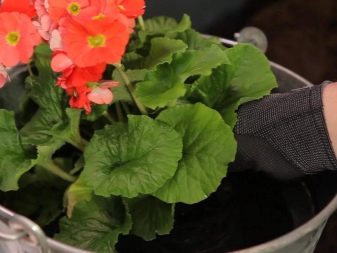
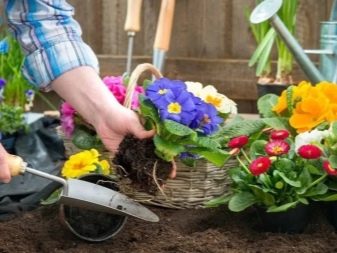
Reproduction
Several methods are used to breed primrose. The plant can be propagated by seeds, cuttings and dividing the bush. It's important to do it right.
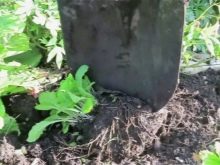
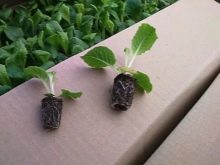

Growing from seeds
Depending on the varietal characteristics, the primrose throws out seeds from early spring to mid-autumn. Use a suitable container for sowing, fill it with ready-to-use primrose mixture or sand and leafy soil. Spread the seeds on the watered surface at a distance of half a centimeter. Then you need to spray the planted seeds from the spray bottle again.
In no case should they be buried, so they can partially ascend or not germinate at all. To maintain the microclimate, cover the container with a plastic bag or transparent glass. Install it in a room where the air temperature is kept at 17-18 degrees Celsius. After 14 days, the first shoots will begin to hatch. Do not miss this moment, immediately transfer the container to a brighter and cooler place. If this is not done in time, the seedlings will stretch out and die.
Water the container with seedlings as the soil dries. After a couple of months, when the sprouts get stronger, you can plant them in separate pots. Use a small spatula to do this.
Water the soil before replanting so the primrose root system will not be affected.

Dividing the bush
We select a flower aged 3 years and older, remove it from the pot, divide it into 2-3 parts, in some cases into 5 parts. We plant each bush in containers. For better survival, you can cover them with a transparent plastic bag.
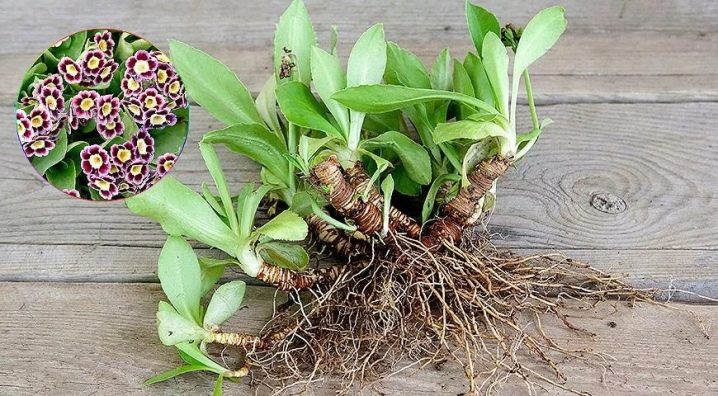
Propagation by cuttings
This procedure is best done in the spring or autumn. We separate a small part from the shoot, on which there is one leaf and a growth bud. Cut the sheet into ½ part. We dip the cutting into the preparation "Kornevin" and plant it in moist soil, consisting of earth or sand. Cover with a glass jar to create a greenhouse effect.
At 18 degrees Celsius, the plant takes root in a couple of weeks. When the primrose releases 2-3 young leaves, it can be transplanted into a permanent container.

Distillation
It is very profitable to sell blooming primrose by March 8. She can also please her family and friends. When forcing primroses, they take the mother bushes and divide them into several parts, plant them in separate containers and put them in the basement for the winter period, where the air temperature will be kept at 7-8 degrees Celsius.
They take out the pots in early February and place them on the lightest windowsill. Indoors, the temperature should not exceed 18 degrees. Flowers will bloom for the holiday. After flowering, you can transplant the plant into open ground or a greenhouse.
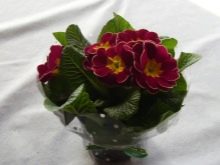
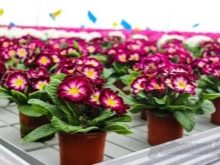
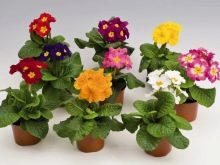
Diseases and pests
The first sign of illness ramulariasis are round spots of yellow color on the lamina. The center of the spot is "decorated" with a brown substance, which subsequently decays, forming a hole in the leaf. Most often, plants suffer from this ailment due to hypothermia and waterlogging of the soil. In order for the flower to recover, it is necessary to correctly adjust the watering regime and air humidity. Diseased leaves are removed. Then carry out the processing fungicidal preparations, for example, "Fundazol" or "Vitaros".
Gray rot is a fungal disease. First, yellow leaves appear, then pathogenic spots on the peduncles and leaves are covered with a gray bloom, which get wet and rot over time. If you do not take action, then such spots grow over the entire surface of the leaf blade and provoke the death of the plant.
Pathogenic fungus can be stored in the substrate for up to two years. On healthy plants, the disease also gets through watering, through the air and through contact with diseased flowers. The reason for the appearance of gray rot is inadequate ventilation and lighting, an excess of mineral fertilizers, high temperature and humidity. To cure the flower, the conditions for its maintenance are adjusted and the bush is treated with "Fundazol" or "Rovral".
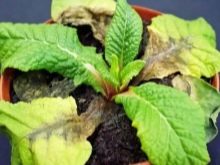
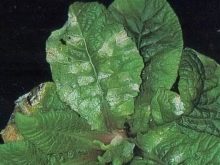
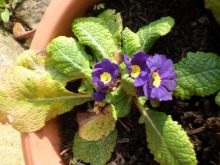
How to properly care for primrose, see below.







































































































The comment was sent successfully.